Archaeological Institute of America
Deadline: March 15, 2025
Each year, the James R. Wiseman Book Award Committee will recommend, in time for the presentation of the award at the Annual Meeting of the Institute, the academic work on an archaeological topic it deems most worthy of recognition in that year. Books and monographs bearing a date of publication within the four calendar years prior to (not including) the year of the Annual Meeting at which the award is made are eligible for consideration. Textbooks will not be considered, and handbooks or other edited volumes must be exceptionally strong contributions to qualify for consideration. Authors/editors must have been AIA members in good standing for at least one year immediately preceding nomination. For multi-authored or multi-edited volumes, this requirement applies only to the primary author/primary editor/principal investigator.
AIA members are encouraged to suggest books worthy of the award by filling out the Nomination Form. Authors and publishers may also bring their books to the Committee’s attention by filling out the Nomination Form. Publishers should nominate no more than two (2) books per year and should ensure that the books meet the criteria of the award. Books may be submitted for the award only once, and should not be re-submitted unless specifically requested by the Committee. Books intended for a general audience should be nominated for the Felicia A. Holton Book Award.
Notifications Procedure
The committee will review nominations and make a decision by October. This decision then needs to be approved by the AIA’s Governing Board. In November, AIA Staff will contact all nominators regarding the status of their nomination. The winner will be celebrated at the Awards Ceremony in January.

2025
The Archaeological Institute of America is pleased to present the 2025 James R. Wiseman Book Award to Dr. Jessica Lamont, Assistant Professor in the Department of Classics at Yale University, for her book In Blood and Ashes: Curse Tablets and Binding Spells in Ancient Greece (Oxford University Press, 2023).
Dr. Lamont’s book is the first synthetic study of curse tablets in the ancient Greek world (750-250 BCE). She explores the social, political, and historical role of curse tablets from their origins among legal settings in ancient Sicily through to their wider social and ritual use in the broader Greek world and includes an afterword on their role in Roman antiquity. Her approach to these text-objects integrates their archaeological context for the first time in a focused yet compelling way. She emphasizes the materiality of the objects while also employing her epigraphic skills to integrate them into an engaging historical and social narrative. The result is a book of interest to archaeologists, epigraphers, historians, and scholars of ancient ritual.
Starting with the earliest curse tablets, in Sicily, Lamont demonstrates that their original intention was to inhibit the testimonies of rivals in court cases. They were typically buried at a grave site, often of a child, to communicate more directly with underworld spirits. She traces the adoption of the practice as it moved further east to southern Italy, Macedonia, the Black Sea region, and especially Athens, and illustrates the patterns of knowledge transmission and adaptation that occurred. The use of the tablets expanded to include curses intended to bind a beloved or to disadvantage rivals in love or business. Also examined is the practice of burying curse effigies, which developed alongside the use of curse tablets. The dolls, made of a variety of materials, were often bound, pierced or mutilated, to represent the cursed individual and mimic the desired effects.
Using case studies, Lamont pulls together threads of internal and external evidence to weave the personal stories of the lives of individuals living at a particular time and place. A picture develops of the charged emotions often involved in personal relationships that is unavailable through other types of ancient evidence. Ultimately, Lamont synthesizes the threads in an effective and accessible manner, showing how the highly specialized scholarly field of curse tablets can illuminate many facets of life (and death) across the wider ancient world.
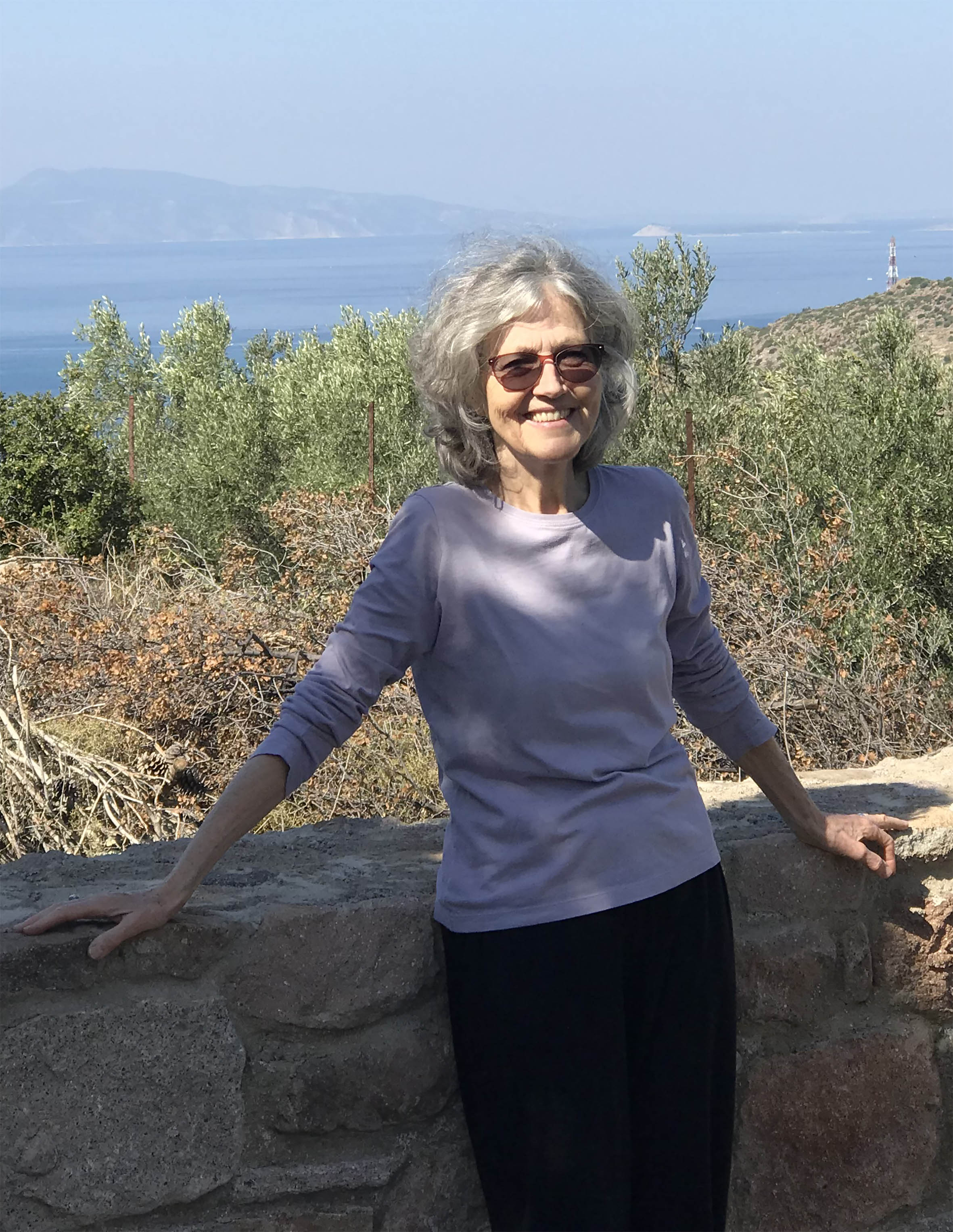
The Archaeological Institute of America is pleased to present the 2024 James R. Wiseman Book Award to Dr. Lyvia Morgan for her book Keos XI: Wall Paintings and Social Context: The Northeast Bastion at Ayia Irini published by INSTAP Academic Press in 2020.
Dr. Morgan’s monumental publication examines the Late Bronze Age wall paintings from the North Bastion in Ayia Irini on the island of Kea. Her study and presentation of fragments preserving images of people, animals, architecture, and landscapes allow her to reconstruct detailed and vibrant scenes of Cycladic life, thereby weaving a complex story of the interrelationships among island communities of the Aegean, in terms of trade and artistic traditions.
Dr. Morgan’s project started in the 1980s when she began to sort through some 3000 fragments of fallen plaster that preserve both a miniature frieze and plant panels. Due to the project’s longevity, it also records the change in research interests and methodologies that have accompanied the technological advances of the 21st century.
The structured approach of Dr. Morgan’s investigation skillfully leads the reader through the theoretical basis and methodologies of the project. Her methods include iconographic comparison with other Aegean wall paintings, microscopic analysis of thin sections, environmental analysis of landscape and natural resources, and a network approach to contextualize her conclusions. Through detailed discussion of catalogue entries, she interprets every object, person, plant, animal, and building that can be identified and explains how they can be reconstructed in larger scenes.
This volume will serve as an invaluable resource for anyone pursuing research in the art, architecture, trade, or environment in the Aegean during the Late Bronze Age. This book also presents a model for research projects that look at a multiplicity of scales, from micro to macro. It will be a fundamental resource for decades to come and the Archaeological Institute of America is pleased to recognize it with the 2024 James R. Wiseman Book Award.
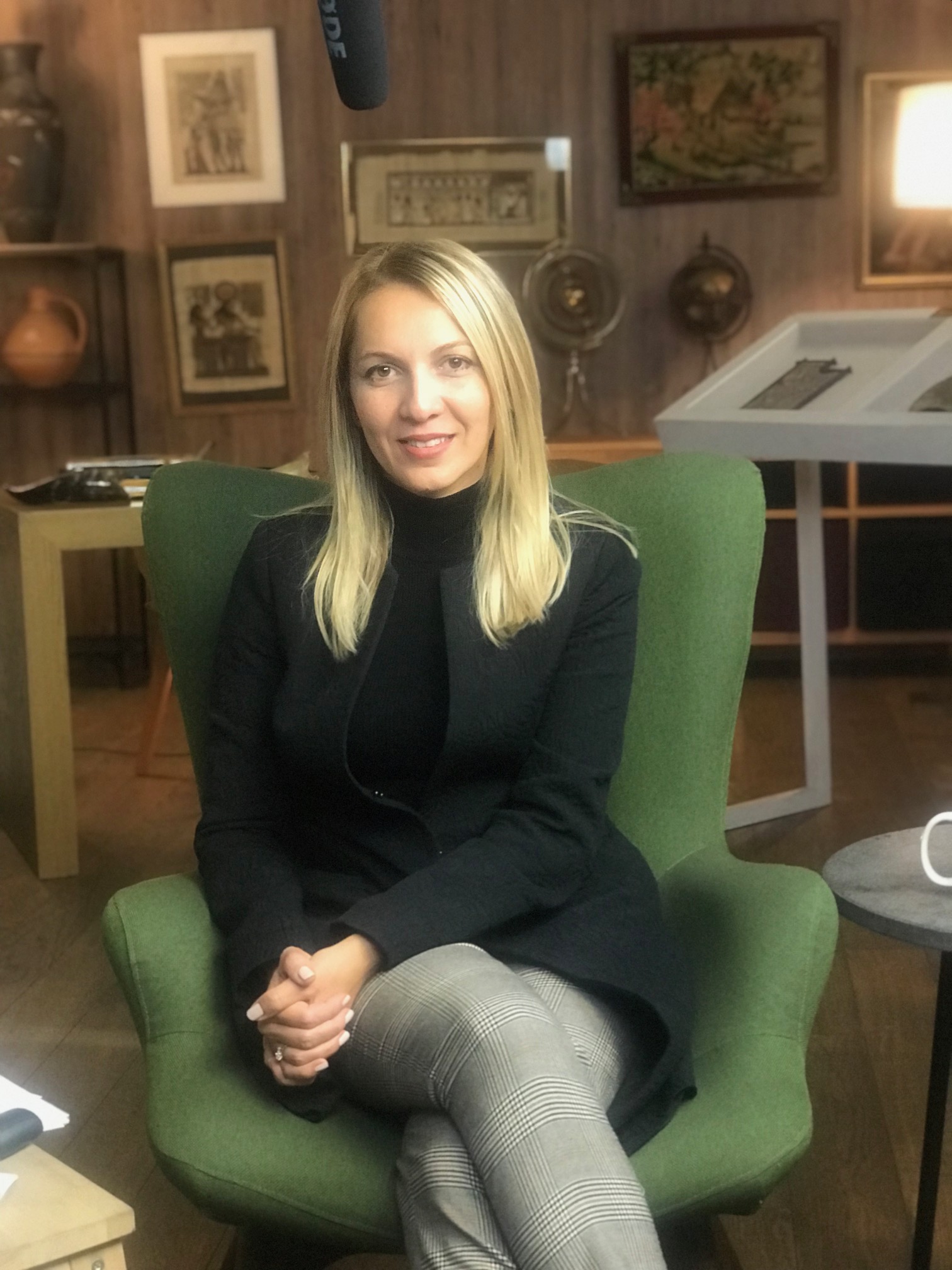
2023
The Archaeological Institute of America is pleased to present the 2023 James R. Wiseman Book Award to Dr. Tuna Şare Ağtürk for her book The Painted Tetrarchic Reliefs of Nicomedia, Uncovering the Colourful Life of Diocletian’s Forgotten Capital (Brepols Publishers, 2021).
Tuna Şare Ağtürk’s remarkable book is the primary publication of a major new monument of imperial Rome from Nicomedia in Asia Minor: 66 painted architectural reliefs (L. ca. 50m) revealed by the 1999 earthquake. Nicomedia was the center of the Late Roman Empire in the east during the rule of Diocletian. The material, found during rescue excavations of 2001 and 2009, notably has an excellent archaeological and architectural context. The new reliefs from Nicomedia fill an important gap between the Severan and Constantinian periods and form a striking contrast with those on the Arch of Constantine in Rome. Şare Ağtürk provides a masterful analysis of all aspects of the reliefs, interpretation of the subjects, painted decoration, marble origins and technique, and the symbolic use of size and paint. These sculptures should be included in every book on Roman Art.
Şare Ağtürk thoroughly analyzes the reliefs’ archaeological, literary, and historical contexts. These finds are the best-preserved examples of painted sculpture thus far known in Roman art. The latest techniques of paint analysis (VIL and UV imaging, USB microscopy) are used. Color photographs reflect the innovative use of technical imaging with Multibliz Profilite sunlight color-matched flash and color-neutral light-shaping fixtures. The results are impressively presented in color throughout, highlighting the results of the pigment analysis. The fact that much of the paint, including drips, still remains gives a better sense of what painted sculpture actually looked like. The author also employs careful analysis of clamp holes, lifting holes, and tool marks to understand the construction process and to argue that the frieze was put up hastily with sculptors and painters working together (possibly the same people).
Şare Ağtürk argues that the frieze demonstrates the first steps toward the imperial iconography seen in well-known Tetrarchic examples, such as the porphyry tetrarchs, the Arch of Galerius, and the Tetrarchic paintings at Luxor. She shows that the new iconography went through a transitional phase that has not been known previously. This study expands our knowledge of material and visual culture well beyond the traditional focus on Rome. For these reasons, Tuna Şare Ağtürk’s The Painted Tetrarchic Reliefs of Nicomedia, Uncovering the Colourful Life of Diocletian’s Forgotten Capital has been chosen for the 2023 James R. Wiseman Book Award.
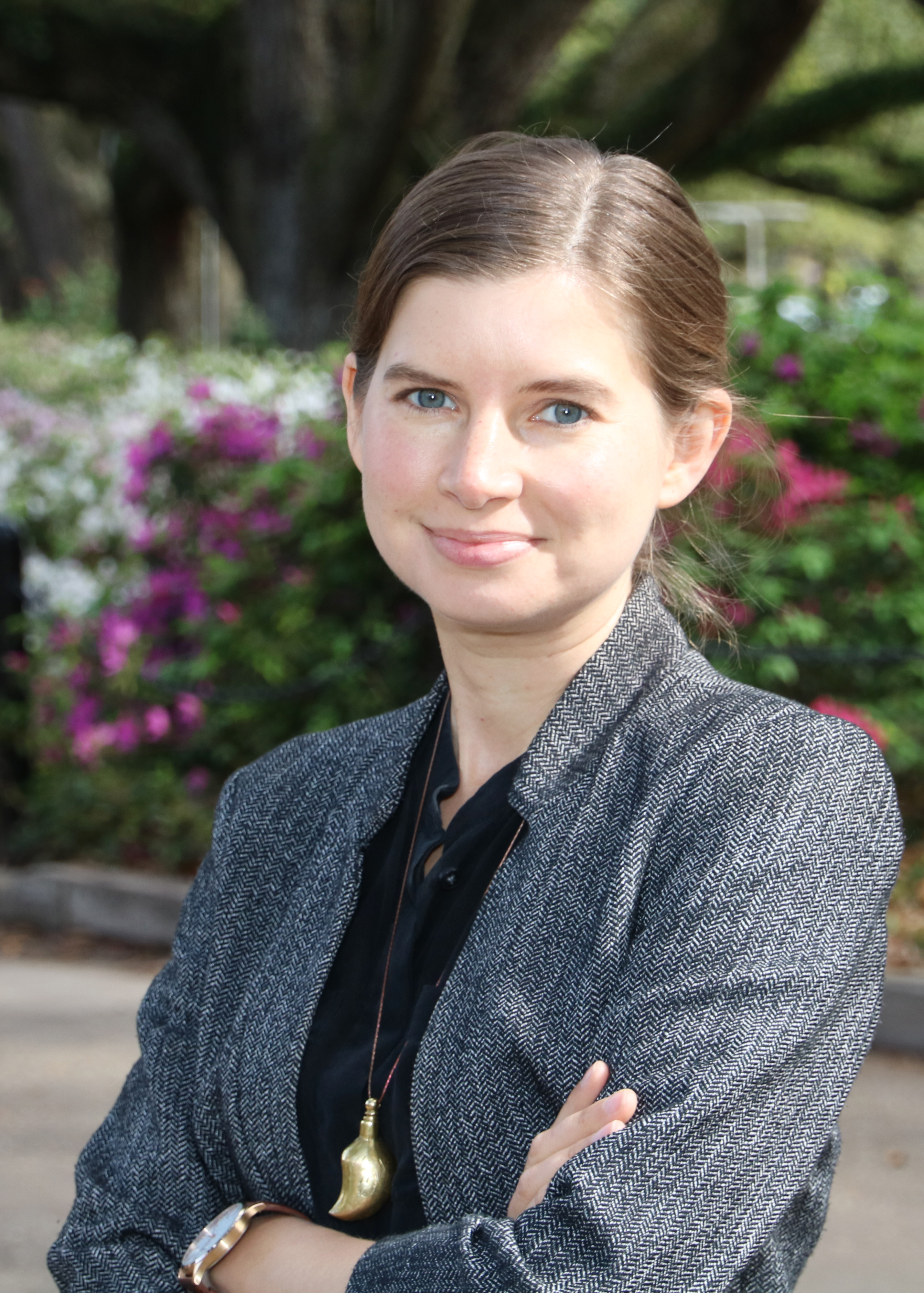
2022
The Archaeological Institute of America is pleased to present the 2022 James R. Wiseman Book Award to Dr. Allison L. C. Emmerson for her book Life and Death in the Roman Suburb (Oxford University Press, 2020).
This book is a study of the suburban spaces of Roman Italy with an emphasis on the period between the first century BCE and the third century CE ranging also though earlier and later periods. Dr. Emmerson challenges the notion that suburbs in this period were funerial, industrial, polluted landscapes. On the contrary she paints a picture of suburban landscapes where tombs, shops, houses, industrial structures, sanctuaries, places of public entertainment, and recycling facilities co-exist in lively interaction with each other and with the urban spaces within the walls. Dr. Emmerson challenges and re-examines archaeological data old and new and reinterprets ancient sources in the context of her new paradigm of the suburb. She is self-consciously not comprehensive in covering all aspects of suburban life, noting that she does not cover such features as agriculture, water management infrastructure, quarries, or military installations. She chooses rather to build a narrative in support of her thesis, as a point of departure for further research. In this she is entirely convincing.
How have we misunderstood these spaces so thoroughly? Well, it’s a long story with evidence poorly interpreted at several junctures, but Dr. Emmerson’s individual chapters on tombs, workshops, amphitheaters, sanctuaries, and waste management reset the course. The resulting synthesis draws most heavily on case studies of archaeological data from old and new excavations at the same time as it provides new and clever readings of ancient sources.
It would be difficult to imagine a book more worthy of this year’s James R. Wiseman Book Award.
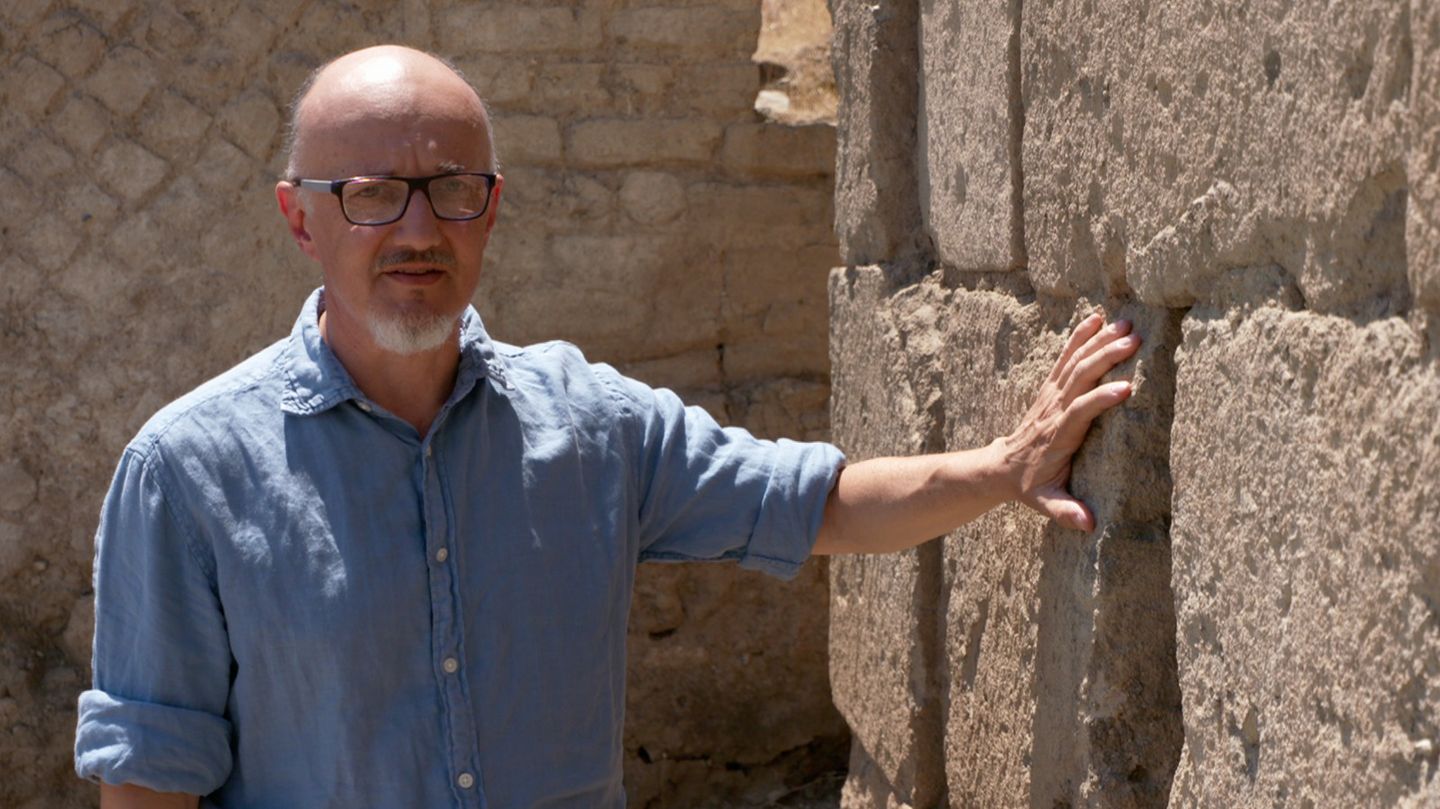
2021
The Archaeological Institute of America is pleased to present the 2021 James R. Wiseman Book Award to The Early Roman Expansion into Italy: Elite Negotiation and Family Agendas by Dr. Nicola Terrenato (Cambridge University Press, 2019).
Dr. Terrenato engages with a wide range of evidence to come to some very new, interesting, and important conclusions about the nature of Roman expansion during the republican period, the role of Rome as a regional capital within Italy during this period, and the participation of Italian elites in this expansion, also paying attention to non-Roman agency in this process. The true genius of the text is that it appeals beyond Classics and Classical archaeology, a rare feat to accomplish.
One does not have to have read all of Livy in Latin to make sense of his claims or have to know the chronology of Black Gloss pottery to understand his argument and model. Its lucid prose will be enjoyed by a wide range of readers, including undergraduates. From his perspective as a scholar of regional urban trajectories in Roman Italy during the middle to late republic, Dr. Terrenato synthesizes multiple arguments and weaves together individual threads to create a coherent picture of Roman republican history. His book tackles a big topic, uses archaeological data to challenge assumptions derived from literal readings of the historical sources, presents an intelligent re-reading of many of our so-called ‘early sources’, and has appeal to those outside of the field of Classical archaeology.
It would be difficult to imagine a book more worthy of this year’s James R. Wiseman Book Award.
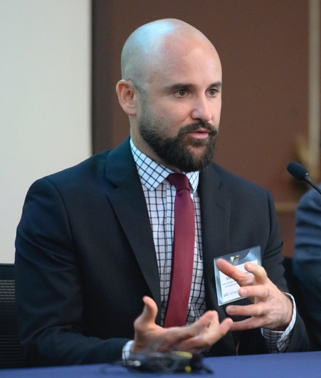
2020
The Archaeological Institute of America is pleased to present the 2020 James R. Wiseman Book Award to The Iranian Expanse: Transforming Royal Identity Through Architecture, Landscape, and the Built Environment, 550 BCE -642 CE, by Matthew P. Canepa (University of California Press, 2018). The Iranian Expanse is enormously ambitious, highly original, and dizzyingly erudite. Covering the millennium from the rise of the Achaemenids to the rise of Islam, it examines the way successive rulers made use of and shaped, Iranian identities through the manipulation of “topographies of power.” Canepa presents and analyses the royal cosmologies that emerged and developed in the region in seventeen chapters divided into four sections: Ordering the Earth, Sacred Spaces, Landscapes of Time and Memory, and Palace and Paradise. Each part is organized historically and examines rupture, continuity, and innovation in the development of a new Iranian royal identity as expressed in the built environment.
Canepa clearly lays out his ideas and approaches and the main theoretical and analytical problems involved in dealing with the evidence. He defines ways that the natural and built environments were used by the kings of the ancient Iranian world to create cultural memories, royal identities, and sacred cosmologies.
The range of disciplines and resources Canepa brings to bear as he argues each of his cases is startling. He seems equally comfortable in handling the broad range of philologies of the languages of the Iranian plateau and the Middle East as he does classical sources. His knowledge of archaeological, numismatic, and art historical scholarship from the Aegean to Central Asia is thorough and current. It is a remarkable achievement to be able to see Antiquity “with Persian eyes” for the first time, and it would be difficult to imagine a book more worthy of the 2020 James R. Wiseman Book Award.

The Archaeological Institute of America is pleased to present the 2019 James R. Wiseman Book Award to Agricultural Sustainability and Environmental Change at Ancient Gordion by John M. Marston.
Agricultural Sustainability and Environmental Change is a thoughtful combination of archaeology and archaeological science. Its principal goal is to document the impact that different political and economic systems have had on subsistence strategies adopted at the site of Gordion in Turkey.
The author, John Marston, does not permit environmental data to overwhelm or obscure the role of humans in determining subsistence strategies. His book sets high standards for publishing environmental data from a Mediterranean site.
The book is impressively well-written in a way that offers specialists detail but provides clear explanations for non-specialists. It is also stimulating in its use of archaeological data as a tool for improving our understanding of the present. Marston presents, synthesizes, and analyzes an enormous quantity of data concisely, and his conclusions are compelling.
Agricultural Sustainability and Environmental Change is a work that should be read and imitated by scholars within and beyond the field of Anatolian archaeology. The Archaeological Institute of America is pleased to recognize it with 2019 James R. Wiseman Book Award.
2018
2017
2016
2015
2014
2013
2012
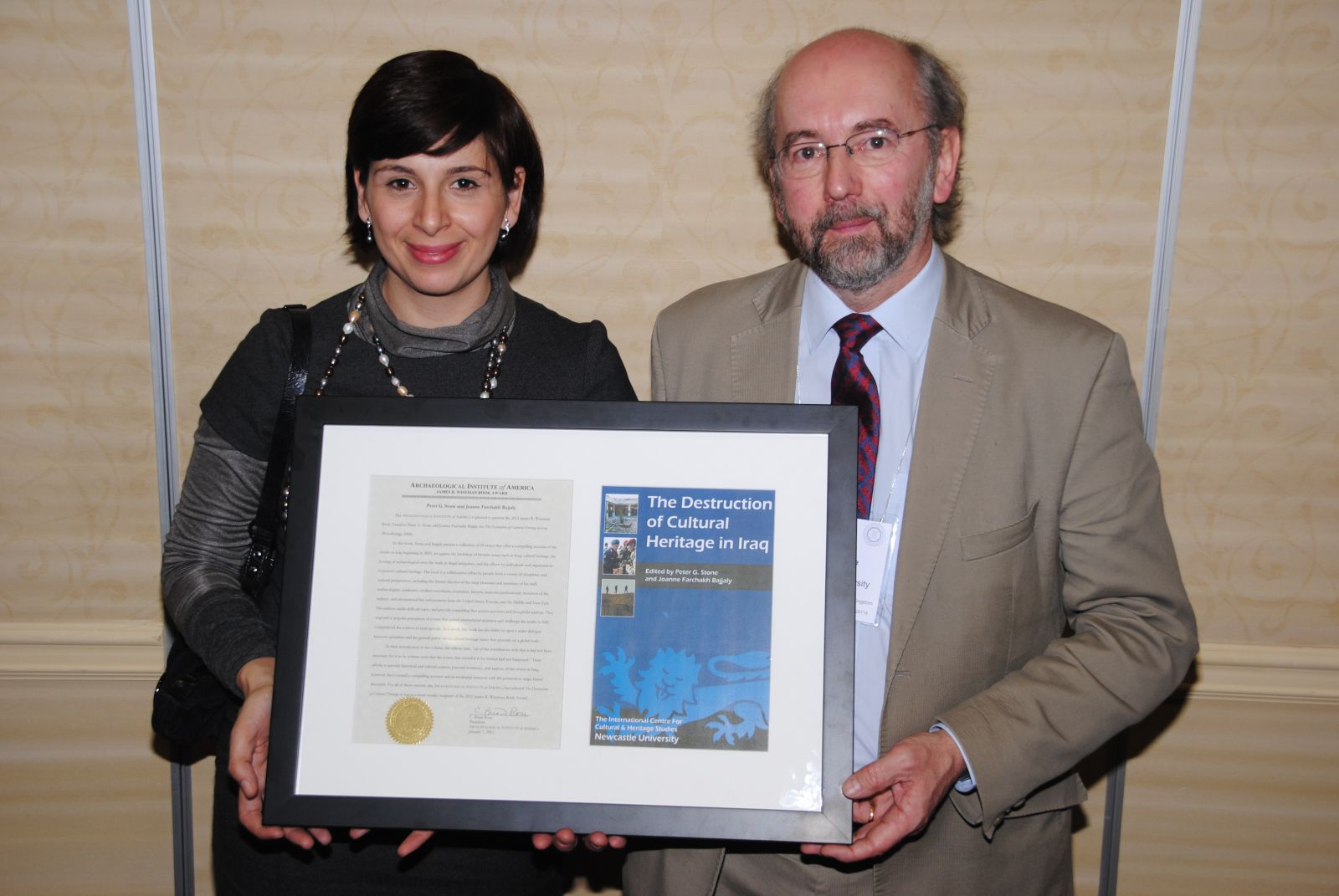
2011
The Archaeological Institute of America is pleased to present the 2011 James R. Wiseman Book Award to Peter G. Stone and Joanne Farchakh Bajjaly for The Destruction of Cultural Heritage in Iraq (Woodbridge 2008).
In this book, Stone and Bajjaly present a collection of 28 essays that offer a compelling account of the events in Iraq beginning in 2003, set against the backdrop of broader issues such as Iraqi cultural heritage, the looting of archaeological sites, the trade in illegal antiquities, and the efforts by individuals and organizations to protect cultural heritage. The book is a collaborative effort by people from a variety of disciplines and cultural perspectives, including the former director of the Iraqi Museums and members of his staff, archaeologists, academics, civilian consultants, journalists, lawyers, museum professionals, members of the military, and international law enforcement from the United States, Europe, and the Middle and Near East. The authors tackle difficult topics and provide compelling first-person accounts and thoughtful analysis. They respond to popular perception of events that gained international attention and challenge the reader to fully comprehend the context of each episode. As a result, this book has the ability to open a wider dialogue between specialists and the general public about cultural heritage issues that resonate on a global scale.
In their introduction to the volume, the editors state, “all of the contributors wish that it had not been necessary for it to be written; wish that the events that caused it to be written had not happened.” Their efforts to provide historical and cultural context, personal testimony, and analysis of the events in Iraq, however, have created a compelling account and an invaluable resource with the potential to shape future discourse. For all of these reasons, the Archaeological Institute of America has selected The Destruction of Cultural Heritage in Iraq as a most worthy recipient of the 2011 James R. Wiseman Book Award.
2010
The Archaeological Institute of America is pleased to present the 2010 James R. Wiseman Book Award to Judith McKenzie for The Architecture of Alexandria and Egypt, 300 BC–AD 700 (New Haven 2007).
McKenzie’s book is a monumental accomplishment. It provides the first comprehensive treatment of the ancient architecture of Alexandria, one of the principal cities of the Mediterranean in antiquity, from its founding by Alexander the Great in 331 B.C.E. to the aftermath of the Islamic conquest of 642 C.E. In doing so, it constitutes the culmination of years of meticulous research by McKenzie and others on countless buildings through many phases of urban development. McKenzie draws on archaeological, literary, and epigraphic evidence to show that, despite the harsh ravages of time, much of this ancient city can be reconstructed and understood. Her study exposes a vibrant and innovative architectural tradition, informed by the cultural interactions that took place within the city’s limits.
McKenzie’s masterful book is beautifully produced and lavishly illustrated, with hundreds of new color photographs, line drawings, and reconstructions. The work will be a vital resource for anyone undertaking research on the city; yet the clarity and engaging tone of the prose make it thoroughly accessible to nonspecialists and lay readers as well.
The Archaeological Institute of America presents this award in recognition of McKenzie’s outstanding contribution to archaeological research.

2009
The Archaeological Institute of America is pleased to present the 2009 James R. Wiseman Book Award to Joan Breton Connelly for Portrait of a Priestess: Women and Ritual in Ancient Greece (Princeton 2007).
In this book, Connelly presents a reasoned and comprehensive review of the evidence for Greek priestesses and the public roles they played. Refuting the notion that Athenian women were always of second-class status, she offers an important counterweight: Athenian women were not invisible, but occupied positions of great authority within the religious cults of the time. The subject is intelligently presented, wonderfully illustrated, and written with great style. While the book has already sparked some controversy among reviewers, it is the right kind of controversy, the kind that marks an exciting approach to a topic too long ignored.
Of particular excellence in the book is the blending of evidence from ancient texts and from archaeology. While the nature of the evidence leaves room for interpretation, Connelly’s use of so wide a range of information makes it a uniquely valuable contribution to the field. The thesis is well argued, reexamines some of the basic arguments in the study of women’s roles in ancient Greece as well as in the organization of Greek cult, and will unquestionably be cited for years as a model for the use of archaeological evidence in such areas as social history, women’s studies, and the history of ancient religion. For all of these reasons, Portrait of a Priestess is a most worthy recipient of the 2009 James R. Wiseman Book Award.

2008
The Archaeological Institute of America is pleased to present the 2008 James R. Wiseman Book Award to Sheila Dillon for Ancient Greek Portrait Sculpture: Contexts, Subjects and Styles (Cambridge and New York 2006).
In a reversal of traditional scholarship, Dillon focuses on the unidentified portraits of ancient Greek warriors, statesmen, writers, and philosophers. By leaving aside questions of style and identification, she illuminates aspects of these sculptures that indicate their importance both in Greece and in Rome. Thus, discussions of format and display add to our understanding of the production and acquisition of works of art in the Roman world. Comparing portrait types with datable examples from classical and Hellenistic grave stelae allows Dillon to decode the visual language of Greek portraits. While doing so, she demonstrates that portraiture became common in fourth-century B.C.E. Greece, rather than in the Late Hellenistic period, as has often been assumed.
As a counterpoint to Gisela Richter’s Portraits of the Greeks (1965), Dillon’s volume takes on a harder task, asking deeper cultural questions that are necessitated by the absence of identifications. In doing so, it rescues a significant body of work that has been largely ignored and makes it central to our understanding of the familiar, named portraits of figures such as Socrates or Demosthenes. From this point on, our understanding of Greek portraiture, and the Roman practice of reproducing and collecting it, will be based on this innovative, interesting, well-argued, well-researched, and beautifully illustrated book.
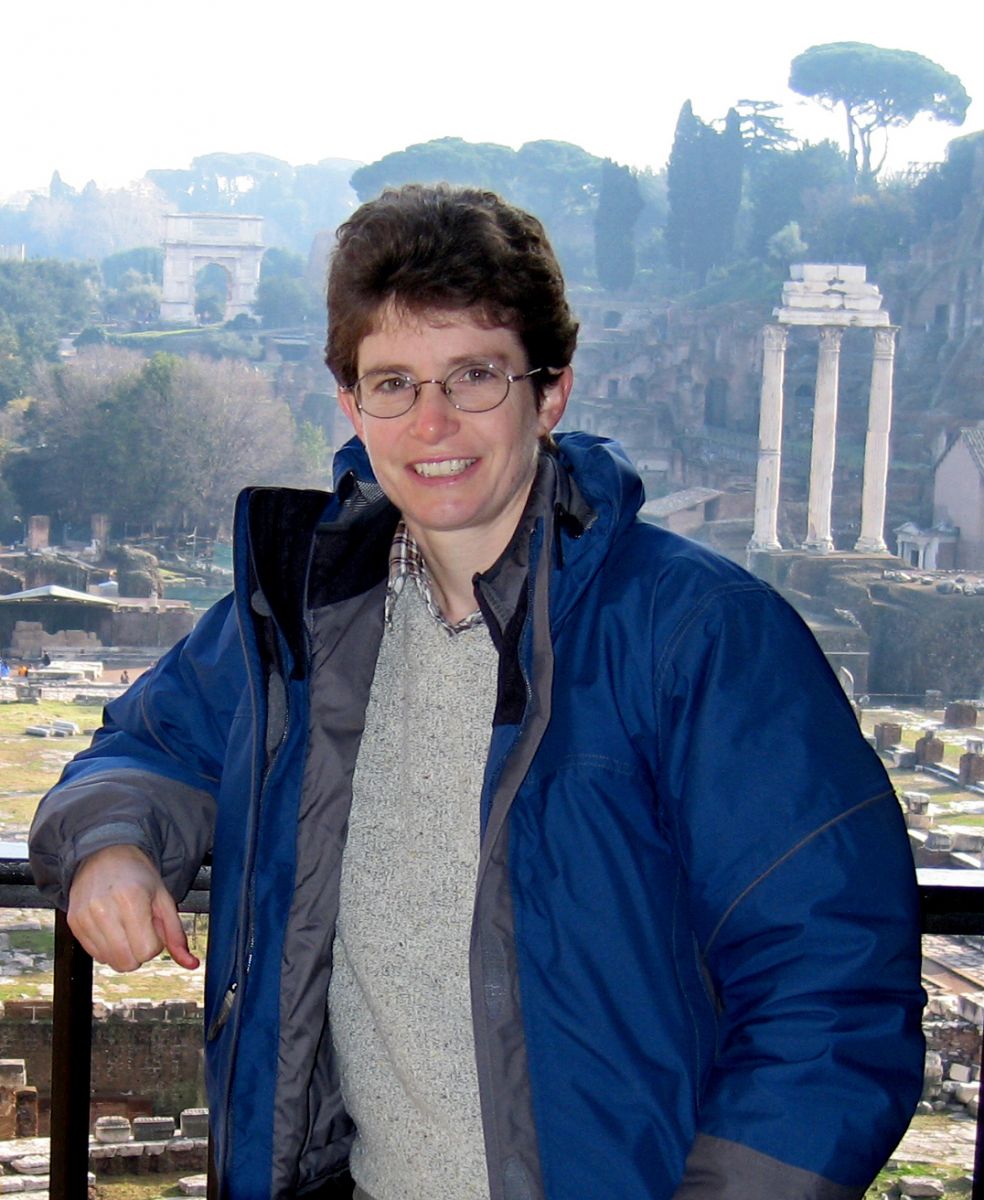
2007
The Archaeological Institute of America is pleased to present the 2007 James R. Wiseman Book Award to Lynne C. Lancaster for Concrete Vaulted Construction in Imperial Rome: Innovations in Context (Cambridge and New York 2005).
This book represents a significant contribution to the study of Roman architecture and archaeology from a technical aspect. Anyone who reads it will never be able to look at Roman concrete buildings in the same way again. Lancaster covers all aspects of the technology of concrete construction, which is useful not only for teaching Roman archaeology and architecture but also for understanding how Roman concrete structures were designed and built.
While this is a specialized study, and a very important one in its field, it also communicates in clear and appealing language to the interested nonspecialist and layperson. The book represents an excellent marriage of architectural specifics with broader cultural analysis. Furthermore, Concrete Vaulted Construction provides substantial archaeological evidence, rather than conjecture and speculation, about Roman construction. Lancaster’s clear illustrations and straightforward prose render the subject more comprehensible, and thus potentially more appealing to a much wider audience, than has previously been possible. It belongs on the archaeologist’s bookshelf next to the essential works by Giuseppe Lugli, Marion E. Blake, and Jean-Pierre Adam, as a full member of that distinguished group of seminal studies of Roman construction and buildings. This book is a worthy addition to the list of winners of the James R. Wiseman Book Award of the Archaeological Institute of America.
2006
The Archaeological Institute of America is pleased to present the 2006 James R. Wiseman Book Award to Bruce G. Trigger, for Understanding Early Civilizations: A Comparative Study (Cambridge University Press, Cambridge, UK, 2003).
This book is a magisterial comparative study that Bruce Trigger has been developing for over thirty years. Understanding Early Civilizations compares the major civilizations of the world along historically and philosophically important thematic lines. The committee concurred that his command of a wide range of material from both the New World, especially the Maya, and the Old World, especially the Near East and Egypt, makes this an incomparable text, sure to be foundational for the discipline of archaeology.
Although the synthesis of data is encyclopedic, the work is also methodologically sophisticated, clear, and elegantly based on a consideration of competing philosophical approaches to understanding and interpreting early civilization. It is also beautifully written, in a way that captures the attention of specialists and non-specialists alike. Few scholars could successfully take on such a monumental task and none with more élan.
Bruce Trigger’s inimitable ability to convey, in a creative way, the complex ideas and empirical questions that underlie theoretical controversy has clearly reached a new peak with the publication of this masterwork. Understanding Early Civilizations is a magnificent achievement and the AIA is proud that it is the 17th recipient of the James R. Wiseman Book Award.
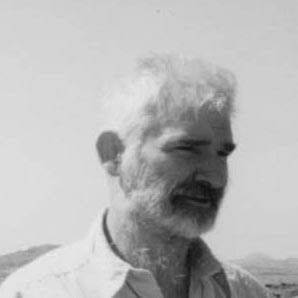
2005
The Archaeological Institute of America is pleased to present the 2005 James R. Wiseman Book Award to T.J. Wilkinson for Archaeological Landscapes of the Near East (University of Arizona Press, Tucson, 2003).
Wilkinson has written a book of fundamental importance to the study of the cultures of the Near East, ancient, medieval and modern. Based on more than thirty years of fieldwork, synthesized with the now vast field of landscape studies, Wilkinson’s is the first comprehensive discussion of the use and the evolution of complex and diverse landscapes extending from Anatolia in the west through Syria, the Levant, Iraq, southeast Arabia, and as far east as the Iranian plateau.
After outlining the basic modes of data collection, principles and techniques of analysis, and theories of interpretation, Wilkinson constructs a typology of distinct “signature” landscapes and identifies the basic categories of their use. He tells a compelling tale of the dynamic and complex evolution of the landscape in response to both environmental and human intervention from the Neolithic period through the first millennium C.E. Augmented with copious illustrations and tables, a glossary, and a comprehensive bibliography, Wilkinson’s study explains the processes of landscape change using numerous case studies located in distinct ecological zones. His detailed discussions take into consideration a vast range of environmental, archaeological, and textual evidence. The end result is a picture of landscape change over millennia presented as a “succession of kaleidoscopes,” capturing the infinite potential of the cumulative interaction of nature and culture.
Wilkinson has set the agenda for the next generation of landscape studies in archaeology, setting the highest standards of practice, indicating the many outstanding problems, and pointing the way for future work in the many regions that await investigation.
2004
The Archaeological Institute of America is pleased to present the 2004 James R. Wiseman Book Award to Gloria Ferrari Pinney for Figures of Speech: Men and Maidens in Ancient Greece (University of Chicago Press, Chicago & London, 2002).
Figures of Speech is a subtle study of modes of portrayal that interweaves ancient written and material remains, in full consciousness of their possibilities and limits. In lucid prose, Gloria Ferrari Pinney searches out past metaphors, ideals of female and male. Her pursuit is self-aware, and starts with an open presentation and discussion of its theoretical underpinnings. Her ruminations on the world of images, what forms them, and what can be known about and from them, are well informed and persuasive, and her critique of the concepts of “myth” and “geme,” representation and reality, is a must-read for beginning as well as advanced scholars.
Concentrating on classical Athens, the book’s chapters play variations on the theme of gendered representations, from scenes of women working wool painted on pottery, to stone kouroi, to the scanty accounts and remains of the ritual of Artemis at Brauron. Each serves as a point of departure in a search for more general cultural concepts within the polis: what males and females are capable of, how they develop, and what makes them attract the love of men. This fruitful interaction between the visual and textual evidence makes Gloria Ferrari Pinney’s study truly interdisciplinary, and of importance to philologists as well as to archaeologists.
Figures of Speech is provocative and thoughtful-its sophisticated approach to Greek culture and images should guide discussion in the future.
2003
The Archaeological Institute of America is pleased to give the 2003 James R. Wiseman Book Award to Cyprian Broodbank for An Island Archaeology of the Early Cyclades (Cambridge University Press, Cambridge/New York, 2001).
Broodbank’s analysis of the human presence and activities in the prehistoric Cycladic Islands combines archaeological, environmental, and geographic data in innovative and often unexpected ways. Starting with the landings of the earliest seafarers, An Island Archaeology of the Early Cyclades takes the lacunose archaeological and environmental data and poses new questions to explain how these islands interacted among themselves, and eventually integrated into the network of the wider Aegean world.
The book is informed, but not straitjacketed, by theories and models of island archaeology developed in other archipelagoes, and its well-structured archaeological analyses seamlessly blend into the larger cultural historical and theoretical picture.
Most importantly, Broodbank has sailed these shores, looked out over these hills, and discerned the sight-lines that are so important for the development of Cycladic contacts. He has a real sense of place, and is able to bring that immediacy to his lucidly presented analyses, allowing his readers a truly new perspective.
An Island Archaeology of the Early Cyclades will determine the direction of research in the Aegean islands for years to come.
2002
The Archaeological Institute of America is pleased to give the 2002 James R. Wiseman Book Award to Lynn E. Roller for In Search of God the Mother: the Cult of Anatolian Cybele (University of California Press, Berkeley,1999).
To the much-contested study of goddess-worship has come a voice of reason. In Search of God the Mother exposes the assumptions, stereotypes and misconceptions behind the image of the mother-goddess, and substitutes exact observations, clear arguments, and sound conclusions. Historical in outline and intent, Roller looks to literature, inscriptions, and the material remains to reconstruct the various roles that god the mother played, first in Anatolia, then in the wider worlds of the Mediterranean, and now in modern theories of psychology and history of religion.
This is an elegant treatment of a very problematic issue, handled with sensitivity and meticulous attention to detail. It exposes the false assumptions behind the characterization of mother -goddess worship as “primitive,” and traces the implications for questions of gender and ethnicity in the modern as well as the ancient world. This clearly written, well organized, and handsomely produced book should become a standard.
2001
The Archaeological Institute of America is pleased to award the James R. Wiseman book award to Graeme Barker, David Gilbertson, Barri Jones, and David Mattingly, for Farming the Desert: the UNESCO Libyan Valleys Archaeological Survey; Vol. 1: Synthesis, edited by Graeme Barker, and Vol. 2: Gazetteer and Pottery, edited by David Mattingly (UNESCO Publishing; Department of Antiquities, Tripoli; and Society Libyan Studies; London,1996).
There have been many fine archaeological projects in more well-known parts of the ancient world in recent years. But few can claim to have filled such an enormous gap in our knowledge as the UNESCO Libyan Valleys Survey. Farming the Desert presents the results of only five seasons of fieldwork, but is based on decades of research by a wide range of specialists, synthesized into these clear and well-written volumes. They illuminate one of the least-known Mediterranean landscapes, the Tripolitanian pre-desert plateau. This dry and difficult land, now almost bare of permanent settlement, bristles with remains of ancient wall systems and farmsteads, previously unexplained. Farming the Desert catalogues these remains in a useful and well-illustrated Gazetteer, and documents the artifacts and pottery associated with them. But it goes beyond that to assemble the evidence for all aspects of the interaction of an ancient population with landscape, society, and the wider world. Farming the Desert reconstructs a sophisticated system of floodwater farming, and explains why these settlements and the way of life associated with them appeared, flourished for six centuries, and were finally abandoned. What is more, despite overwhelming logistical problems, the UNESCO Libyan Valleys Survey also stands as a model multicultural and interdisciplinary team. Its work shows the relevance of archaeology to contemporary life and to current issues.
1999
The Archaeological Institute of America is pleased to award the James R. Wiseman book award to Joseph Coleman Carter for The Chora of Metaponto: The Necropoleis (Austin: University of Texas Press, 1998). These volumes represent a truly interdisciplinary collaborative effort under the guiding hand of the director of the excavations, Joseph Coleman Carter. This work, the first complete publication of a South Italian necropolis, makes a major contribution to our understanding of the archaeology of Magna Graecia. In addition, the multifaceted analysis can serve as a model for archaeological publication in other geographical areas. Carter and the other contributors place the necropolis in its historical and geographical setting. The decision to publish together the tombs and their contents, including the human remains as well as grave goods, allows the authors to build a picture of burial practices that show a surprising diversity. The clearly presented data provide substantive information that will contribute to current debates on the relation between Greek colonists and the indigenous inhabitants, understood in a regional context. The meticulous physical-anthropological study allows a determination of the age and sex of the people interred in the graves, and presents some surprising anomalies, such as a great preponderance of women. Carter addresses the issues raised by these data carefully, with informed speculation and a recognition of the limitations of the evidence. The book is an outstanding archaeological publication that will be indispensable to specialists in the history and archaeology of South Italy, and will serve as a model of collaborative presentation of an archaeological project. In its presentation of a well-preserved cemetery in all of its complicated aspects, The Chora of Metaponto sets a new standard for publication.
1998
The Archaeological Institute of America is pleased to present the James R. Wiseman Book Award for 1998 to Janet Delaine for her book The Baths of Caracalla: A Study in the Design, Construction, and Economics of Large-Scale Building Projects in Imperial Rome (JRA Suppl. 25, Portsmouth 1997).
This book is a landmark study of a major imperial Roman building-the Baths of Caracalla-by a scholar who is a trained civil engineer as well as a classicist-historian and an archaeologist. A combination of disciplinary modes are used in this volume to provide a truly integrated picture of Roman public architecture-its design process, the economics of its construction, and the social and political implications of its existence.
This is not a straightforward architectural analysis of the entire bath complex, but rather a discussion of aspects of the project at large. Clearly written and superbly illustrated with plans drawn by the author, its detailed discussion of labor and economics provides insight into the building industry of Severan Rome, including information on how and where constructional materials were obtained, calculated estimates of the quantities of materials used and manpower employed, as well as timetables for the schedule of construction— questions that are not traditionally addressed by scholars.
Delaine’s work demonstrates a totally new and exceptionally promising method of analyzing standing Roman buildings, one that breaks new ground in the examination of ancient architecture. This book not only changes the nature of the discipline, but it also raises the hurdles for anyone doing research in architectural and social history.
1997
The Archaeological Institute of America is pleased to present the James R. Wiseman Book Award for 1997 to Carol C. Mattusch for her book Classical Bronzes: The Art and Craft of Greek and Roman Statuary (Cornell University Press, Ithaca, 1996). Mattusch’s work is a fundamental reexamination of the concepts of “original” versus “copy” in ancient sculpture and of evidence for the division of labor between sculptors’ and founders’ workshops. Based on meticulous scholarship, but addressed to a wide readership, Classical Bronzes describes how the indirect lost-wax casting process could, and more importantly did, permit the production of several statues from one original model. Her interdisciplinary work includes a study of techniques and practices in the manufacture of Greek and Roman bronze statuary, scientific examinations of surviving works, and reappraisals of other ancient evidence, such as images of bronze-working in vase painting and discussions of this manufacturing process in ancient literary sources.
Mattusch’s theory of “serial production” provides new insight into the study of sculptures such as the Eponymous Heroes in the Agora and the Riace Bronzes. She argues that “serially produced” sculptures were generally based on a limited number of models; each one was individuated by minor manipulations in pose or by the change of certain features, as well as the addition of attributes. The resultant visual similarity was an essential part of the statues’ meaning and vital to their recognition as gods, heroes, or rulers by an ancient viewer. In the case of the Riace Bronzes, the “serial production” theory makes a plausible case for the contemporaneity of these two statues, previously considered sufficiently different in appearance for some scholars to have dated them a generation apart. Mattusch’s work forces a fundamental rethinking of the use of stylistic analysis in Greek sculpture.
The book is part of Mattusch’s ongoing research program that began with the excavation of bronze-working areas in the Athenian Agora and Corinth, published in Greek Bronze Statuary: From the Beginnings through the Fifth Century B.C. (Ithaca, 1988). A recent exhibition catalogue, The Fire of Hephaistos: Large Classical Bronzes from North American Collections (Cambridge, Massachusetts, 1996), provides a detailed study of 55 large-scale bronze sculptures. This exhibit also generated a video, Myth, Man, and Metal (Institute for Mediterranean Studies, Cincinnati, 1996), for undergraduate instruction, and an international symposium, to be published as From the Parts to the Whole: Acta of the 13th International Bronze Congress 28-31 May 1996 (JRA Suppl. forthcoming). New work by Mattusch includes The Victorious Youth (Malibu, 1997), about the Getty Bronze, and a forthcoming study of the corpus of sculptures found in the Villa dei Papiri, Herculaneum.
1996
The Archaeological Institute of America is pleased to present the James R. Wiseman Book Award for 1996 to P. Roger S. Moorey for his book Ancient Mesopotamian Materials and Industries: The Archaeological Evidence (Clarendon Press, Oxford 1994). The book is a revision and considerable amplification of Moorey’s work of 1985, Materials and Manufacture in Ancient Mesopotamia: The Evidence of Archaeology and Art (BAR 237, Oxford 1985). Ancient Mesopotamian Materials and Industries brilliantly succeeds in taking a place beside Alfred Lucas’s famous Ancient Egyptian Materials and Industries (in its last edition with J.R. Harris), one of the most useful and long-lasting reference works in Egyptology and in Mediterranean, Near Eastern, and African archaeology. As is the case with the work of Lucas and Harris, we expect that Moorey–as it may become known–will be consu1ted by generations of students, scholars, and general readers. Moorey moves with ease and elegance among fields and methods as diverse as lexicography and stereoscopy, chemistry and iconography, while reviewing the state of our knowledge of ancient Mesopotamian stoneworking; manufacture of bone, ivory, and shell artifacts; metallurgy and metalworking; architectural materials and building techniques; and glazed materials and glass. He makes it look easy, but his careful and balanced reportage represents years of detailed investigation and thoughtful evaluation. Curators and conservators, archaeologists and art historians, and specialists in many other fields will find not only that Moorey has gathered and assessed the evidence but also that he has quietly shaped views of Mesopotamian material culture–and the technical practices and cultural interests that lie behind it–that will be the scholarly basis for many reflections, and, no doubt, creative polemics and new inquiries, for many years to come.
1995
The Archaeological Institute of America is pleased to award tbe James R. Wiseman Book Award to Andrew Wallace-Hadrill for his book Houses and Society in Pompeii and Herculaneum (Princeton University Press, Princeton 1994). Coordinating and developing the analysis presented in important earlier articles, Wallace-Hadrill investigates the “social structure of the Roman house”-the way in which its setting, layout, architectonics, and decor enabled owners to present or stage their social identity and status and, at the same time, shaped Roman conceptions of social position in the first place.
Wallace-Hadrill’s investigation required an extensive rethinking of previous accounts of the various divisions and functions of the Roman house, as exemplified by the remains at Pompeii and Herculaneum, and an imaginative reconstruction of the way in which both architectural and ornamental features could have served as their signs. Attentive to such issues as the hierarchical organization of spaces in the house, its management of circulation and penetration, and its creation of different zones of spatial and visual experience and comfort, Wallace-Hadrill shows how the Roman house formatted distinctively Roman conceptions of public and private, client-oriented and family-centered, or productive and leisure-time experience.
He challenges art historians to think about the four famous “styles” of Pompeian wall painting in terms of the ways in which they marked these differences, particularly in terms of the house owner’s relationships with his family, friends, clients, and servants. And he challenges archaeologists to think skeptically about the correlation between commerce and elite lifestyle; the Roman house, he urges, had a multidimensional functionality that modem distinctions can easily misunderstand.
Always attentive to the problems and limits of the evidence, Wallace-Hadrill combines careful architectural and archaeological analysis with social and art historical considerations, rigorously related to a statistical analysis of a sample of houses at Pompeii and Herculaneum designed to identify and track social and economic differences. The book very successfully crosses methodological and disciplinary boundaries but achieves an effective integration of the evidence. Lucidly presented technical argumentation and clear exposition ensure that the book should be widely read among many classicists, archaeologists, art historians, and historians.
1994
The Archaeological Institute of America is proud to honor Frances F. Berdan and Patricia Rieff Anawalt for their monumental publication of The Codex Mendoza (University of California Press, Berkeley and London 1992).
These four volumes- containing interpretation, description, facsimile, and transcriptions and translations- combine codicological and iconographic study with informative and stimulating ethnohistorical and archaeological analysis. Mobilizing a truly interdisciplinary team of authors (H.B. Nicholson, Wayne Ruwet, Bruce Barker-Benfield, Kathleen Stewart Howe, Elizabeth Hill Boone and Edward Calnek) and contributing major chapters themselves, Berdan and Anawalt approach The Codex Mendoza, which records the domain of Metocuhzoma II for the instruction of King Charles V (for whom the pictorials were translated into Spanish) and is now in the Bodleian Library, from a wealth of different vantage points, never losing sight of the central importance of the document for art history, history, and archaeology.
The Codex Mendoza contains precious information- ideologically shaped to be sure- about forms of life in the Aztec empire immediately before the incursion of Cortez. Although replicating, in part, information known from other sources the Codex has many intriguing, even unique features, and the editors have succeeded in establishing its art- and ethnohistorical importance. Throughout they have been very well served by their publishers, obviously committed to the highest standards in reproduction and book production.
Berdan and Anawalt have thought carefully about the needs and interests of many readers and they and their publishers have impressively realized their goal. In addition to an exemplary page by page description of the manuscript itself (volume II), the authors consider its “hybrid” style- European conventions of naturalism were combined with indigenous iconic strategies of visual communication- and examine its status as a “victory chronicle”; assess its records of tribute and, more broadly of A ztec life; address and imaginatively resolve questions of authorship and craftsmanship; and consider glyphic and graphic forms and icons as well as costumes and other paraphernalia depicted.
Coupled with the facsimile (volume III) and transcription/translation (volume IV), this level of detail and interpretive contextualizing vastly enriches the reader-viewer’s experience’ of the manuscript. For serious specialists, the edition will be a major source of data and suggestive insights for decades to come.
1993
The Archaeological Institute of America is proud to honor Sarah P. Morris with the 1993 James R. Wiseman Book Award for her stimulating contribution to Greek archaeology, Daidalos and the Origins of Greek Art (Princeton University Press, Princeton 1992).
Truly creative scholarship does not reinforce old paradigms. Rather it seeks to ask original questions and break intellectual boundaries. Sarah Morris does just that. Using the shadowy figure of the early Greek protoartist Daidalos as the central thematic focus, the work reconstructs the complex cultural dialogue between Greek society and the cultures of the Near East from the Late Bronze Age to the Persian Wars.
This is a work of great learning, which draws on the latest scholarship in both Classical and Near Eastern studies. The author uses the evidence of archaeology and philology in a spirit of creative interaction that should become the norm for our discipline. The evidence from field research is interpreted in the light of current theoretical scholarship, producing searching questions and exciting new explanatory models.
The book is shaped by a Herodotean vision of the eastern Mediterranean during the first half of the first millennium B.C. Not only is full credit given to the formative role that Near Eastern civilizations played in shaping the development of Greek culture, but the interactions are visualized in realistic human terms. It is smalltime traders and itinerant artisans that make this history as much as elites and abstract forces.
Behind many of the arguments put forth lie the current debates about the way that the creation of a Hellenic-centered ideology diminished our appreciation of the contributions of Near Eastern civilizations. The questions are considered in the context of the Persian Wars and the ways in which the Athenians used the events for their own cultural politics. Here, as elsewhere in the book, readers may disagree with the author’s conclusions, but they will have to acknowledge that she has produced an original and very exciting work.
1992
The Archaeological Institute of America is proud to honor Robert Chapman for his exciting contribution to the study of Mediterranean prehistory; Emerging Complexity: The Later Prehistory of South-east Spain, Iberia and the West Mediterranean.
Robert Chapman’s book focuses on southeastern Spain during the Neolithic, Copper, and Bronze Ages, when the region was the locus for the development of complex societies with large, fortified settlements and sophisticated craft production focused on metallurgy. He not only provides an imaginative reconstruction of the processes that during the third and early second millennia B.C. contributed to this high level of social and economic development, but also discusses factors that prevented the emergence of the more advanced political and social systems found in the contemporary Aegean world. Chapman, working in the tradition of the late David Clarke, demonstrates that the New Archaeology with its emphasis on systems theory, ecological adaptation, and cultural evolution, can still provide very productive research models. He also shows how contemporary European prehistoric archaeology can provide important laboratories for testing a variety of theoretical models.
His task was not easy, since the study of Iberian prehistory has traditionally focused on typological studies and the too facile use of invasion models to explain cultural change. There had been little stratigraphic excavation and limited research in environmental or settlement archaeology. Chapman has extracted much useful information from these earlier excavations and integrated it with more recent data. His task has been greatly assisted by the current renaissance of archaeological research in the Iberian peninsula with its increased emphasis on stratigraphy, settlement reconstruction, and the collection of ecological information. Chapman creates a fascinating picture of human societies adapting to the parameters of complex, often harsh, ecological systems. Much is attributed to local invention and intraregional contacts and relatively little to outside influences resulting from migration and trade.
Fernand Braudel, in his seminal work The Mediterranean and the Mediterranean World in the Age of Philip II, stressed the need to consider both unity and diversity in the long history of the lands bordering that inland sea. Too often Classical archaeologists have studied seriously only the prehistory of the core regions of Greek and Roman civilization. Areas like the Iberian peninsula became of interest only with the advent of Greek trade and Roman conquest. Groups that existed before then were what the anthropologist Eric Wolf has described as “Peoples without History.” The expansion of Greek and Roman empires, like that of later imperial systems, has to be visualized as the meeting of different dynamic systems, each with its own long historical experience. Both experiences shaped the society that emerged after the conquest. The history of this “other” in classical imperialism, however, must be reconstructed mainly through archaeology. Robert Chapman’s book provides us with a fine model of how this should be done.
1992
The Archaeological Institute of America is proud to honor John Malcolm Russell with the James R. Wiseman Book Award for his major contribution to Near Eastern archaeology, Sennacherib’s Palace without Rival at Nineveh.
The palace of the eighth- and seventh-century B.C. Assyrian king Sennacherib is known mainly from the 19th-century excavations conducted there by A.H. Layard and his successors. This work produced palace plans, sculpture, and a variety of epigraphical documents. Publication of these early excavations was limited, however, and both the material objects and the documentation were scattered.
John Russell has undertaken the formidable task of assembling this diverse evidence relating to the design, building history, and decoration of the palace. The information is presented with detailed clarity. His research, however, extends well beyond antiquarian reconstruction. Assyrian buildings provide excellent examples of the integration of architecture written text, and decoration to present an ideological statement. Much of Russell’s work centers on the nature and purpose of this propagandistic message. He considers the conventions and traditions that dictated the use of text and picture in Assyrian palaces, and reconstructs the ways in which Sennacherib was both a follower and an innovator. He discusses the potential audiences for the various messages and considers which parts of those propagandistic messages were accessible to which of the diverse groups that Sennacherib strove to impress.
Too often in ancient studies the information to be obtained from written texts is separated from that derived from pictorial representations. Too often detailed reconstructive scholarship is seen as incompatible with the use of innovative theory. John Russell has demonstrated that text, picture, archival research, and contemporary theory can be integrated into an imaginative reconstruction of how the representations on an ancient building were intended to affect those who used the structure. Sennacherib’s Palace without Rival at Nineveh provides a splendid model for any scholar studying the nature of official propaganda in antiquity. It illustrates well the need for an approach to antiquity that bridges Near Eastern, Greek and Roman cultures in order to produce a comprehensive vision of cultural processes in Western Asia and the Mediterranean world.
1991
The Archaeological Institute of America is proud to honor Bruce Graham Trigger with the James R. Wiseman Book Award for his major contribution to the field, A History of Archaeological Thought.
Archaeology as a formal academic discipline is at least a century and a half old. Its researches have now been pursued m all parts of the world. Its goals and purposes have been many, changing with times and places, yet all of these are linked by the central deme of knowing the past, especially that ancient past that wholly or in large part lies before written history. In the last few decades, a critical consideration of these goals and purposes has come increasingly to the fore in archaeological thinking and writing. As someone has said: “The age of innocence for archaeology is over.” We now question what we do and how and why we do it. While some archaeological practitioners may have little patience with these critical concerns, preferring instead to “get on with the job,” we cannot in the long run avoid such questions and doubts. To face them intelligently, we need histories of archaeology, and it is not too much to say that Bruce Trigger has written the best intellectual history of the discipline to date.
Trigger’s A History of Archaeological Thought is worldwide in its scope, and it goes back to the beginnings of archaeological interests and pursuits. It is both an “internal history,” examining the specifics of the practices of archaeology and prehistory in place and in time, and an “external history” in that it attempts to show us how and why archaeologists performed as they did and, in so doing, addresses the national, political, and social backgrounds in which archaeology developed. As such, Trigger, expectably, has written a controversial book with his reviewers differing with him on a variety of issues; however, all have recognized the wisdom and experience that Trigger has brought to this daunting and enormous task.
Bruce Trigger has carried out archaeological researches in East Africa and the northeastern United States. He brings an anthropological perspective to archaeology, both in his fieldwork and in his theoretical writings. Over the past 20 years, he has had few peers in his insightful and incisive writings in archaeological method and theory. His selection for this award by the Archaeological Institute of America is a recognition of his eminence as an archaeologist of world stature.
1991
The sculptured metopes of the early temple of Hera in the Sanctuary at the Mouth of the Sele River were excavated when the mantle of malaria still hung over the Plain of Paestum. The metopes were prepared for presentation to the learned world by their discoverers Paola Zancani-Montuoro and Umberto Zanotti-Bianco when the sounds of war had barely faded from the Salerno beachhead. No cycle of architectural decoration in the Archaic Greek world is so complete. Yet the identification of the iconography of the Sele frieze and the reconstruction of the sequence of its metopes were not easily achieved. Still less clear at first was the full extent of the significance of the Sele metopes for programmatic narration in early Greek architectural decoration.
Today the Institute honors a study that illuminates the organizational principles of the Sele frieze, The Frieze from the Hera I Temple at Foce del Sele by Frances Dodds Van Keuren. The significance of this work reaches beyond the Sele temple to early Greek architectural sculpture as a whole, establishing the case for what was so long doubted: that early Archaic Greek architectural decoration was programmatic art.
The career of the scholar honored today has traversed the United States from north to south and from east to west. She has studied m the shadow of Lykabettos and has excavated where the tributaries of the Sele rise in the heartland of Lucania. The Archaeological Institute of America takes pride in her and in her work.
1990
The Archaeological Institute of America is proud to honor Oscar White Muscarella as the second recipient of the James R. Wiseman Book Award for his outstanding recent publication, Bronze and Iron: Ancient Near Eastern Artifacts in the Metropolitan Museum of Art.
Oscar, Senior Research Fellow in the Department of Ancient Near Eastern Art in the Metropolitan Museum of Art, is internationally renowned for his scholarly contributions to the archaeology of the Iron Age in the Near East, particularly of Anatolia and Western Iran, and to our understanding of the cultural connections between the Near East and Greece in the eighth and seventh centuries B.C. Both inside and outside the community of scholars he has established a second reputation through his penetrating and forthright exposure of deception and forgery wherever it bears upon his primary research projects. He is one of that rare and valuable breed of scholars who are crusaders at heart. As a distinguished museum curator for many years it is inevitable that material culture should have always been his central interest, but never to the neglect of the wider perspectives revealed to him by initial training and experience as a field archaeologist.
Bronze and Iron epitomizes his outstanding contribution to ancient Near Eastern studies over the past 30 years during which the metalwork of the region has been his main concern. This is a catalogue raisonné in the great tradition of museum scholarship, in which the systematic study of objects is seen as a primary means for understanding not only the artistic achievement and craft skills of antiquity, but also the ideologies and values of the societies that created them. It illustrates how the best of such scholarship has always demanded a combination of the skills of the archaeologist with those of the historian of art and culture. Nor has Oscar, ably supported by colleagues past and present in the Metropolitan Museum Laboratory, not least Pieter Meyers, neglected the potential contribution now available through science for understanding composition, processes of manufacture, and authenticity. It is indeed a versatile performance, a major review of the subject, more than welcome after a century of widely scattered scholarship of very uneven quality. Oscar’s knowledge of the existing literature is exhaustive, his critical analysis of it acute, his eye for significant details discriminating and his judgments as firm as may be hoped in the complex world of ancient Near Eastern metallurgy. He sums up like the most learned of judges and gives his verdicts with the conviction of a sworn jury: the evidence is carefully mustered, thoroughly assessed, and rigorously clarified.
The combination of the typical and the outstanding, which distinguishes the Metropolitan Museum collection, has allowed Oscar to explore many aspects of his subject. Indeed, diversity is the hallmark of the ancient Near East, fascinating to those familiar with it, all to often dispiriting to those who encounter it for the first time; but never less than challenging to those who seek to write about it in a way which both the scholar and the general reader may appreciate. It is perhaps the best measure of Oscar’s success that professional scholars and amateur connoisseurs will both find here a model of the way in which museum collections of antiquities of this caliber should be presented in print for their instruction and enjoyment.
There has been a tendency to marginalize the study of material culture and technology in archaeological and anthropological studies in our generation. There are signs that the tide is again turning and an aspect of scholarship once at the heart of our discipline is regaining something of its old status. In presenting the James R. Wiseman Book Award to Bronze and Iron we honor an outstanding work of research, handsomely displayed to the world, which superbly illustrates the potential and vitality of archaeological scholarship practiced in and through our great museums.
1989
The Archaeological Institute of America is proud to honor Anna Marguerite McCann as the first recipient of the James R. Wiseman Book Award for her outstanding recent publication, The Roman Port and Fishery of Cosa: A Center of Ancient Trade.
Anna Marguerite is an internationally renowned scholar, a brilliantly successful popular lecturer and a master teacher whose infectious enthusiasm for learning and insatiable intellectual curiosity have enlightened and enthralled students at Swarthmore College, Barnard College, University of Missouri, University of California at Berkeley, New York University, Trinity College and, currently, at the Woods Hole Oceanographic Institute as its archaeologist for the Jason project, 1989/90.
Her book, which we honor today, represents the culmination of over twenty years of field work and research on Portus Cosanus, an early maritime installation north of Rome. In all ways, it embodies and represents the best of scientific investigation and reporting. It is a landmark work in marine archaeology, a field in which she has pioneered and has helped define during her illustrious career.
Rarely, and far less frequently than we would like, a book appears that is immediately recognized as a “classic” – a work that will have an immediate and permanent impact on our discipline. The Roman Port and Fisheries of Cosa is such a study. It has been universally acclaimed in a series of glowing reviews in journals around the world and has already received a prestigious award; it was judged the outstanding book of 1987 by the American Association of University Presses. G .E. Rickman, writing in our own American Journal of Archaeology (92 [1988], 302) concluded his review by slating: “McCann has set us a splendid example of such interdisciplinary cooperation and, by her use of pioneering archaeological techniques and the sheer breadth of her approach, has given a wholly new animation to port studies.” We can only second his praise.
New archaeology demands collaborative research and scholarship. Anna Marguerite gathered a coterie of gifted scholars at Cosa to assist in providing the broadest possible presentation of the archaeological material. Twenty-two contributors appear in her work. Never before has an ancient port received such a creatively detailed and comprehensive study. Such a complex effort might easily have failed if not for her uncommon organizing ability. Her book stands as testimony to this asset. Its many parts became an entity of unparalleled worth.
All of her associates are worthy of comment and praise, but in particular, Joanne Bourgeois, Elaine K. Gazda, John P. Oleson and Elizabeth Lyding Will prepared chapters of extraordinary importance. The results of their joint efforts is far more than a study of the ebb and flow of life in an early port and commercial eslablishment on the western Italian coast. It is a tour de force that is now the model for all future port studies and marine archaeological explorations.
Anna Marguerite has expanded our vision; she has challenged her peers to meet her standards of excellence and imagination; she has demonstrated what an interdisciplinary approach to archaeology can achieve; she has gracefully told the story of this port site and its trading activities, and family, she has skillfully edited a massive work with diverse appeal to all who are interested in ancient maritime affairs and port studies. The James R. Wiseman Book Award acknowledges our gratitude to her and her collaborators for their stellar scholarship, creative insights and cogent writing, and for such a handsome presentation of their research.
It has often been said that imitation is the sincerest form of flattery. We end our recognition of Anna Marguerite’s exceptional book with our wish that in the future our colleagues will attempt to imitate the scholarly excellence, breadth of vision, integrated research and insightful prose that distinguish The Roman Port and Fishery of Cosa. There is no finer model to follow.
Notifications